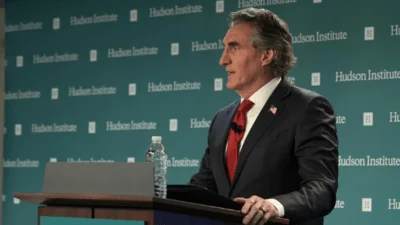Rising electricity demand from AI data centers has forced policymakers to confront the hard reality that existing generation and transmission assets cannot keep pace. Ben Delman, of Solar United Neighbors, views solar power as the most practical and scalable tool available to prevent widespread grid strain. He argues that the nation’s energy strategy must shift rapidly toward utility-scale solar paired with storage if the United States intends to stay ahead of the AI-curve.
“AI isn’t a future problem anymore,” Delman says. "The demand is landing on the grid now, and solar is the one tool that can scale at the speed this industry is moving.”
Federal regulators warn that several states face multi-gigawatt shortfalls. Delman explains that data-center operators often expect utilities to produce the equivalent of a mid-sized power plant within only a few years. “No traditional power plant gets sited, permitted, financed, and built that quickly,” according to him. By comparison, he says, “solar is the only generation source that can realistically hit these timelines.”
State-level permitting is one obstacle. Delman argues that fragmented land-use regulation slows down viable projects unnecessarily. “Developers can build the panels and tie into substations quickly,” he says. “The bottleneck is always inconsistent permitting. States need clear citing rules and predictable timelines or the projects simply go elsewhere.”
Community resistance also slows solar development. Delman believes many residents oppose projects out of confusion rather than opposition to renewable energy itself. “Most people just want clarity and honest information,” he says. “They want to know the land will be treated responsibly and that their community won’t get steamrolled. Good policy can give them certainty without killing projects.”
Delman views energy storage as essential for reducing evening grid stress once AI loads ramp up. “Solar without storage won’t cut it,” he says. "AI peaks don’t stop just because the sun goes down—we need firm capacity rules that tie storage directly to large solar installations.”
Transmission is another critical frontier. Data centers prefer metro-adjacent sites, while the best solar land sits far from population centers. Delman stresses that outdated regulatory frameworks make it difficult to move power to where it’s needed. “Our transmission planning is stuck in a different era,” he says. "AI growth blows up every old assumption. States must work with federal partners to speed up line construction or AI clusters will stall out.”
Federal incentives under the Inflation Reduction Act accelerate renewable investment, yet Delman believes these supports will not overcome structural barriers on their own. “Tax credits help, but they don’t fix permitting delays, transmission gaps, or storage requirements,” he says. That means “states need modern policy or they won’t capture the investment flowing into the AI economy.”
Land availability is a point of contention across rural regions. Delman views this as manageable with careful planning and dual-use design. “Solar doesn’t have to displace productive land—you can graze sheep under panels, restore soils, and create pollinator habitats.” He calls for “thoughtful land use,” that "lets us respect local traditions while still meeting energy needs.”
Delman believes early solar deployment is the safest hedge against supply shortages. He argues that waiting for “perfect projections” invites unnecessary risk. “You plan for the upper bound because the consequences of under-building are catastrophic,” he says. “Early solar build-outs give states breathing room and protect the grid from surprise demand spikes.”
According to Delman, energy planning decisions will determine whether AI becomes a driver of prosperity or a destabilizing burden on the grid. He believes solar must be elevated from a supplemental resource to a central pillar of national strategy. “We either build now or fall behind,” he says. "Solar, storage, and transmission are the only path to keeping AI growth sustainable and protecting the reliability Americans expect.”









